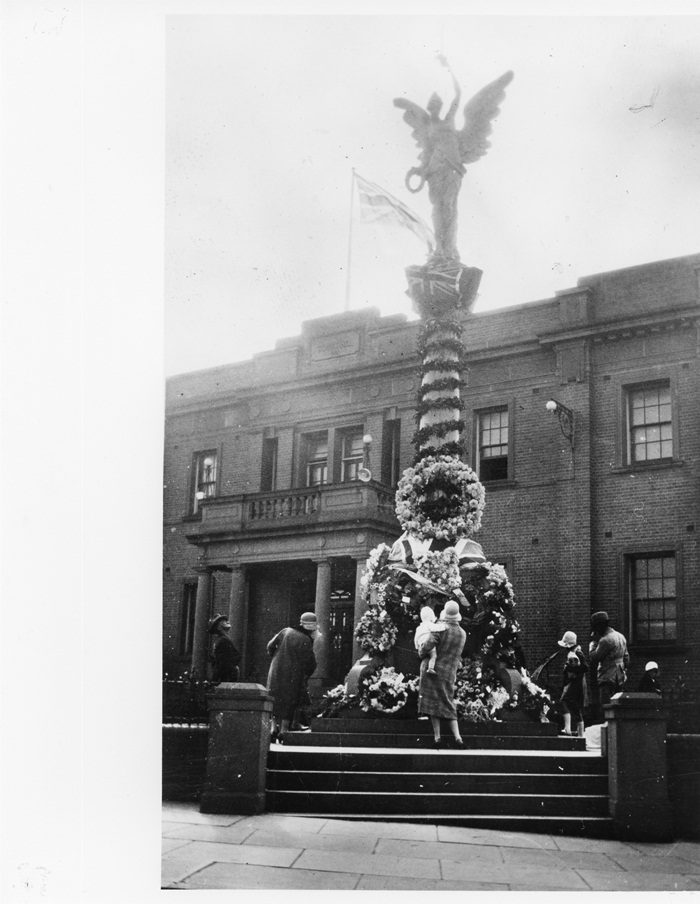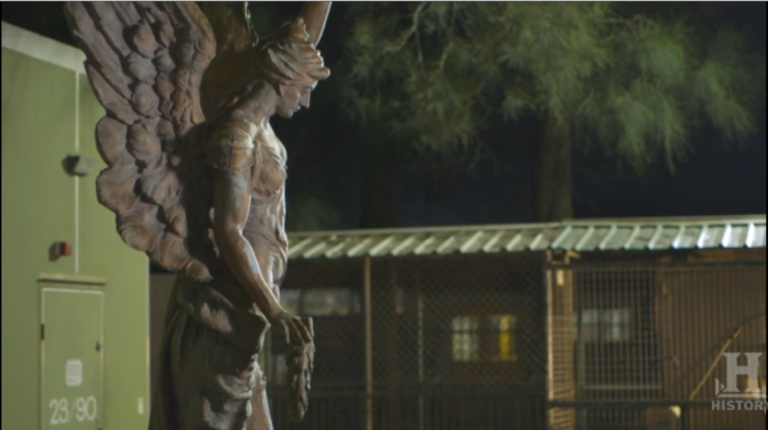Why are some stories – or more tangibly, places – remembered, and preserved?
Places in the past
While ‘history’ in its traditional, textbook, sense might not figure in the lives of most of us living in the Marrickville Local Government Area, recollections from, or stories handed down about the past are meaningful to many.
This sense of the past is often embedded in a particular place. Aspects of the built environment that have been preserved from previous years, decades, or centuries tug perhaps at our memories: our school classrooms, local church, the art-deco cinema down the road. Other sites might be more palpably ‘historical’, and evoke a different way of thinking about the past.
Standing on the corner of Marrickville and Petersham roads, for instance, the Winged Victory is a familiar sight. The figure of Nike (goddess of Victory) grasps a sword in one hand and in the other, a laurel wreath, symbolising peace. The names inscribed at the base of the statue serve as a reminder of the 450 recruits from Marrickville who lost their lives fighting in the First World War. The Winged Victory was sculpted by Gilbert Doble (1880-1974) and unveiled by Sir Walter E. Davidson, then governor of New South Wales, in May 1919.[1]
The statue thus pre-dates the current Marrickville Town Hall in front of which it stands, which was opened in 1922.

The original statue was removed in 2009 over concerns about its deteriorating condition. It remains on display as a centre piece to the new World War 1 Gallery in the Australian War Memorial in Canberra. Click on the image below to view a video of the original Winged Victory being prepared for exhibition:
Today, the Winged Victory is a re-imagined and subtly re-worked version of the original. Sculpted by Darien Pullen, the new statue was lowered onto the same pedestal in April of this year. Nike’s sword is no longer raised in triumph, but held by her side in a more peaceful gesture. In an interview with the Sydney Morning Herald, Pullen articulated that in altering Nike’s heroic pose, he aimed to reach for an image of “peace and sacrifice”.[2]



Click through the photos below to have a look at what aspects of the built landscape have endured, changed or are about to be removed in the Marrickville region. Megan Martin, who along with fellow heritage consultant Ian Kirk has recently surveyed original service stations from the interwar years across NSW, suggests that getting people interested in reading the built environment is an important step in heritage conservation.
“Once you talk to people about something like [a heritage study] and show them some examples, then they learn to read the built environment. If people are doing that, then they are valuing it. There is a much better chance of protecting something if people can read it and like it.”[3]
Megan Martin












Notes
[1] Richard Cashman and Chrys Meader, Marrickville, Rural Outpost to Inner City, (Petersham: Hale and Iremonger, 1990), pp. 30 – 31.
[2] “Winged Victory Raised Again Outside Marrickville Town Hall”, The Sydney Morning Herald, April 15, 2015, http://www.smh.com.au/nsw/winged-victory-raised-again-outside-marrickville-town-hall-20150415-1mlo6t.html.
[3] Megan Martin, “Heritage by the Roadside: Interwar Service Stations”, in Heritage Projects in NSW: Case Studies, p. 11.



